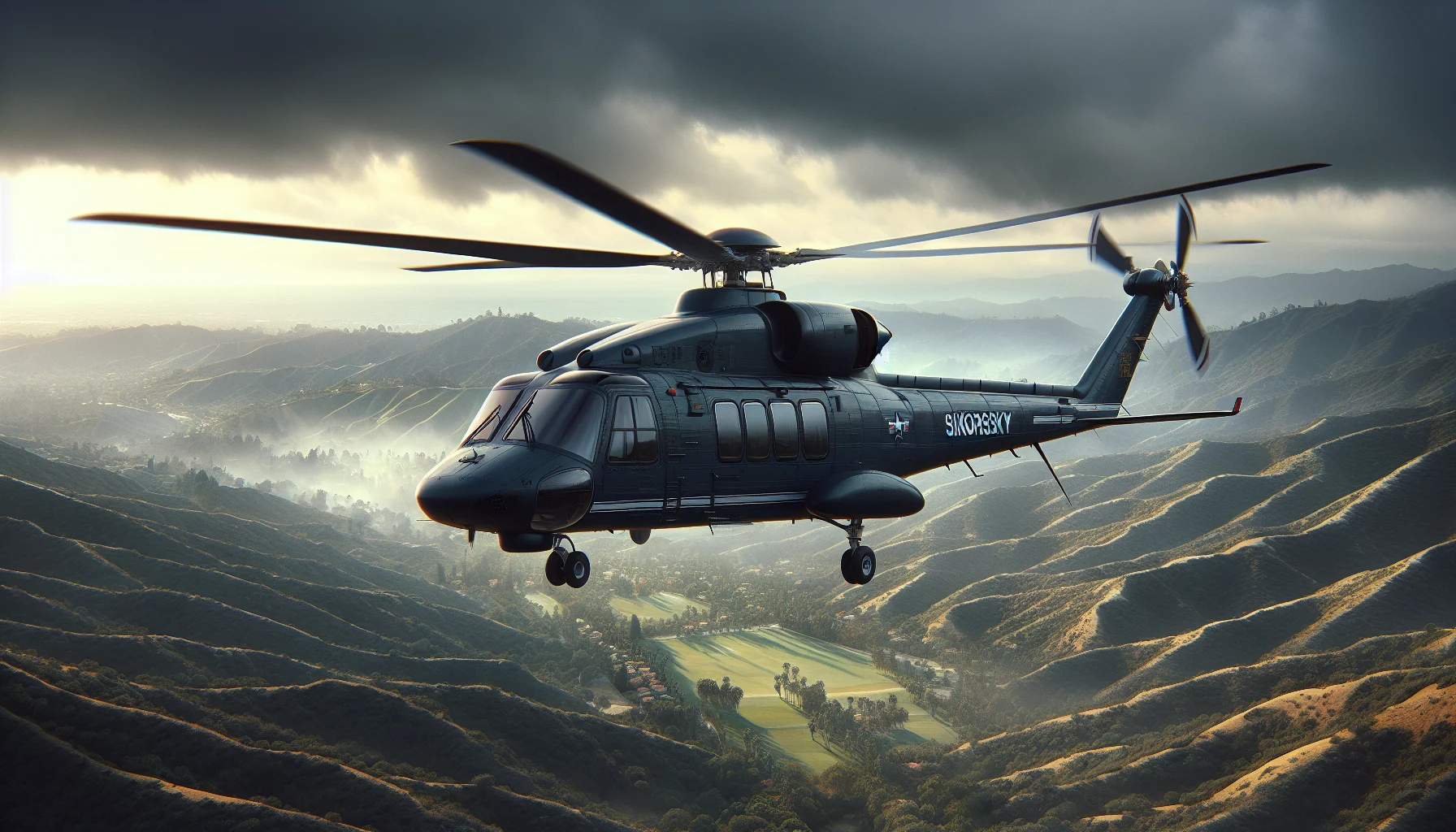
2020 Calabasas Helicopter Crash
by: The Calamity Calendar Team
January 26, 2020
A Tragic Morning
On the morning of January 26, 2020, the skies over Southern California promised little in the way of clarity. The air was thick with fog, casting an eerie mantle over the lush hills of Calabasas. It was under these bleak conditions that the Sikorsky S-76B helicopter prepared to take flight from John Wayne Airport. Island Express Holding Corp owned the helicopter, and it was bound for Camarillo Airport. Aboard the helicopter were nine cherished lives, including that of NBA legend Kobe Bryant and his 13-year-old daughter, Gianna.
Pressures in the Air
The flight plan called for a northwesterly journey, passing above the quilted neighborhoods of Orange County. However, what began as a routine flight soon turned fraught with danger. Instead of relying on sophisticated navigation equipment under Instrument Flight Rules (IFR), the helicopter was operating under Visual Flight Rules (VFR). This meant that the pilot was relying predominantly on his visual acuity—a challenging endeavor on a day where clarity was scarce.
Shortly after the helicopter departed at 9:06 a.m. PST, it became evident that the weather had deteriorated significantly. Fog draped over the landscape, nibbling away at visibility. The pilot, realizing the severity of these conditions, reached out to air traffic control shortly after departure. He requested Special Visual Flight Rules clearance, seeking to navigate through the confusion of clouds.
A Dire Descent
As the helicopter approached the picturesque hills of Calabasas, the situation became critical. At 9:20 a.m., air traffic control acknowledged the pilot's condition and advised climbing to an altitude that would place the aircraft above a dense cloud layer. The helicopter ascended to approximately 2,300 feet, yet the climb introduced new perils. The pilot encountered a phenomenon feared by aviators: spatial disorientation.
Disentangled from the certainty of the earth below, judgments faltered. With each passing moment, the rudimentary visibility outside the cockpit further corrupted clear decision-making. At 9:47 a.m., just shy of the hour mark from departure, the helicopter took a turn, a sharp left descent that sealed its fate. Within moments, the aircraft crashed onto a Calabasas hillside.
In the Wake of Loss
As news of the accident unfolded, shockwaves of grief and disbelief rippled far beyond the borders of the United States. The world mourned not just the passing of supreme talent and promise but the extinguishing of irreplaceable lives. The crash took the lives of all nine occupants, marking a deep tragedy on a somber day in January.
Thanks for subscribing!
Emergency teams and first responders were on the scene promptly, working steadily amid the terrain’s difficulties. The Los Angeles County Fire Department joined efforts, though the steep and inaccessible ground posed challenges to recovery operations. In the aftermath, these efforts were meticulous, aimed at both caution and respect.
Quest for Answers
The gravity of this loss commanded a serious investigation. With the National Transportation Safety Board (NTSB) at the helm, authorities worked to piece together the timeline and causal factors involved in the crash. The examination took over a year, delving into every aspect of the flight, from technical systems to weather conditions, and crucially, the pilot's choices in those pivotal moments.
In February 2021, the NTSB concluded its investigation. They pinpointed the core of the tragedy to be spatial disorientation afflicting the pilot, Arya Zobayan. Under clouded skies, his choice to fly into worsening conditions under VFR compromised safety, leading to an irretrievable loss of control. The report highlighted not the mechanical, but the human vulnerabilities of flight—emphasizing the universal need for safety mechanisms like Terrain Awareness and Warning Systems (TAWS).
A Call for Change
By spotlighting TAWS, the investigation fueled debates around aviation safety regulations, especially concerning helicopters tasked with navigating challenging environments. The aftermath saw calls for systemic improvements that would help protect future passengers from encountering the tragic fate of Kobe, Gianna, and their companions.
The crash left indelible marks on the lives of those left behind, on the world of sports, and beyond it, touching countless souls who knew them through their work and aspirations. But beyond mourning, this tragedy served as a call to action, underscoring the need for improvements and vigilance.
Though tragedies like the Calabasas helicopter crash cannot be wholly eradicated, through reflection and advancement, steps can be taken to guarantee that such somber mornings do not repeat their haunting stories. The echoes of that January day remind us of the balance needed between human ambition and the respectful acknowledgment of the limitations posed by nature.
Stay in the Loop!
Become a Calamity Insider and get exclusive Calamity Calendar updates delivered straight to your inbox.
Thanks! You're now subscribed.